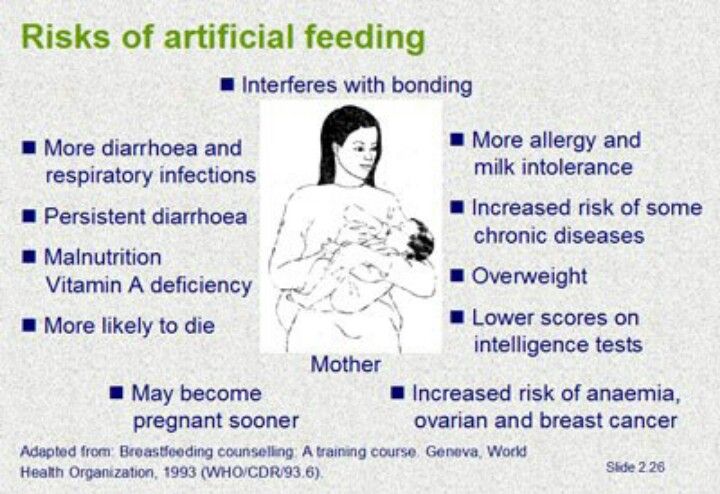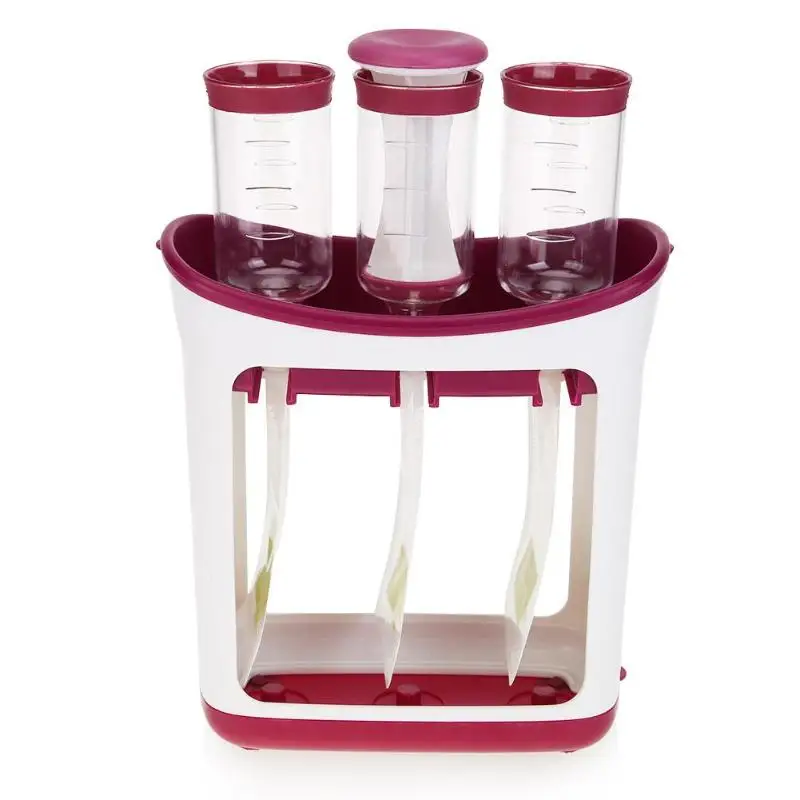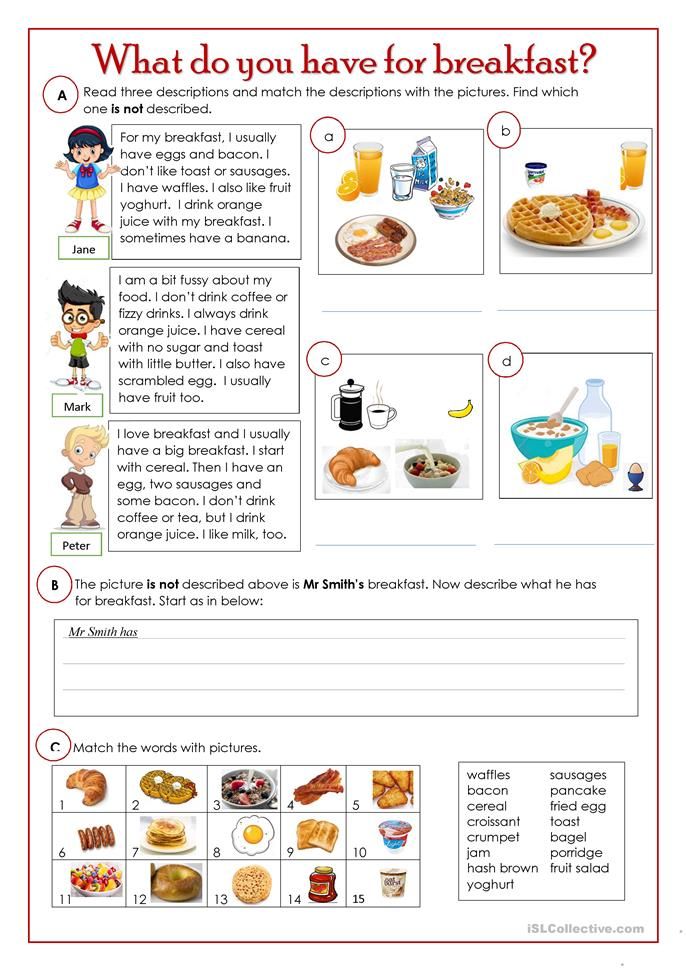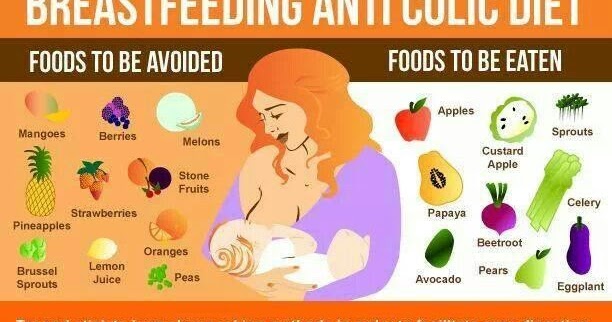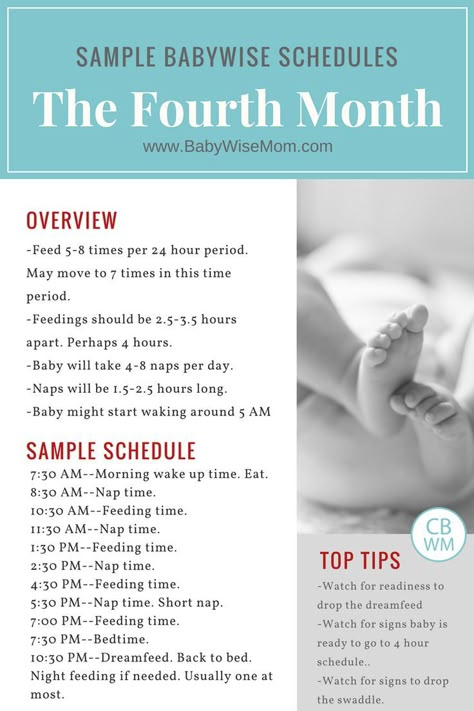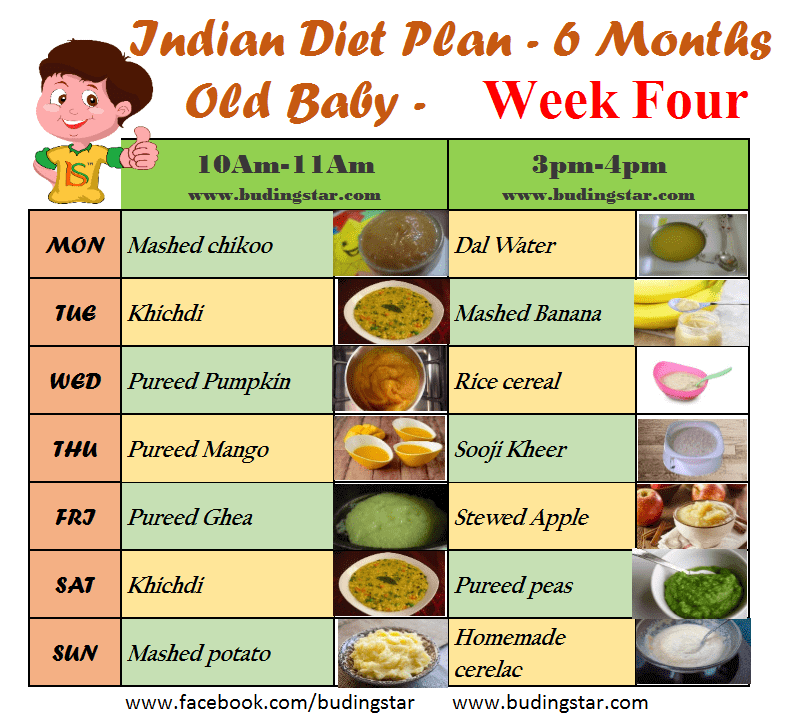Side effects of feeding baby food too early
Most babies are fed solid food too soon, study finds
Health news
By Linda Carroll
Most mothers may be starting their infants on solid foods months sooner than specialists recommend, mistakenly believing their children are old enough to graduate from breast milk or formula – but many say they’re simply following doctors’ orders, according to a study published today.
Parents should wait until their little ones are at least 6 months old before offering them solid foods, say many child-nutrition experts, including the American Academy of Pediatrics.
But researchers at the Centers for Disease Control and Prevention – who surveyed 1,334 new moms – discovered that almost 93 percent of those women had introduced solid foods to their infants before 6 months, that 40 percent did it before the 4-month mark, and that 9 percent had offered solids to their babies before they were even four weeks old, according to the study, published today in Pediatrics.
“Fifty percent said that their health care provider told them it was time to introduce solid food,” said Kelley Scanlon, a co-author of the study and lead epidemiologist in the nutrition branch in the division of nutrition, physical activity and obesity at the CDC.
“That, for us, indicates that health care providers need to provide clearer guidance and really support women in carrying out the recommendation,” Scanlon said.
Physicians' groups settled on the 6-month cut-off after earlier research determined that children who get solid food at too early might be at a greater risk for developing chronic diseases, such as diabetes, obesity, eczema and celiac disease, Scanlon said.
The mothers who volunteered for the CDC study filled out food diaries and questionnaires designed to ferret out their opinions on why and when solid foods should be offered.
Among the moms offering solid foods to infants younger than 4 months, the most commonly cited reasons for doing so included: “My baby was old enough;” “My baby seemed hungry;” “I wanted to feed my baby something in addition to breast milk or formula,” “My baby wanted the food I ate;” “A doctor or other health care professional said my baby should begin eating solid food;” and “It would help my baby sleep longer at night,” researchers reported.
What’s more, moms who fed their babies formula were far more likely to start solids too early versus those who exclusively breast-fed (53 percent versus 24 percent), the study showed.
One food expert unaffiliated with the CDC study suggested that some health-care providers may simply be unfamiliar with current baby-feeding recommendations.
“I think this is worrisome,” said Ann Condon-Meyers, a pediatric dietician at the University of Pittsburgh Medical Center and Children's Hospital of Pittsburgh. “I think it may show that word isn’t getting out that … it is 6 months before solid foods should be offered.”
Still, the study’s findings didn’t surprise Condon-Meyers, who added: “I work in pediatrics and we see a lot of early introduction of solid foods when we do patient histories.”
In addition to possibly boosting, a child’s risk for contracting certain chronic diseases, introducing solid foods too early often means babies don’t drink an adequate amount of breast milk or formula, and that can translate into poorer nutrition, Condon-Meyers said.
Breast milk and formula have all the nutrients and vitamins a baby needs and in the right proportions, Condon-Meyers said.
“If you start giving solid food too early then you are diluting the nutritional intake,” she said. “You’re getting more calories, but less of the nutrients a baby needs to grow.”
Related:
Most parents don't follow doctors' orders
Peanuts, eggs and milk OK for young babies, report claims
Child food allergies may be twice as common as thought
Linda Carroll
Risks of introducing solids too early or too late
The gradual addition of solid foods to your baby’s diet is an exciting transition for your baby and you. Eating solids is just one of the many steps your baby will take toward greater independence. Between 4 and 6 months of age, babies start to observe and mimic their parents’ or other caregivers’ eating habits—a sign that they’re getting ready to advance to complementary foods.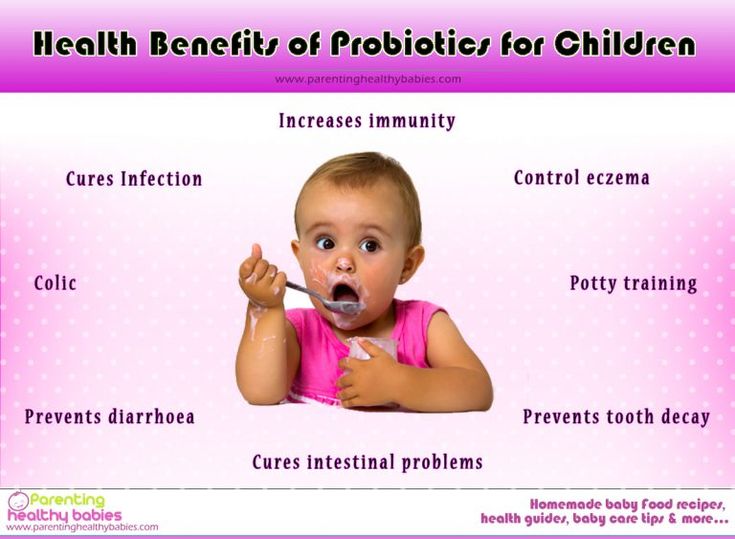
What experts say about when to introduce solids
Babies should be breastfed exclusively for about the first 6 months of life, according to trusted health authorities like the American Academy of Pediatrics (AAP). During that time, breast milk (or infant formula) provides all the calories and nutrients your baby needs.
Around 6 months, you can start introducing solids. Some babies may be ready for solid foods a bit sooner (4-6 months) and others a bit later (6-8 months). As with all milestones (sitting, eating solids, crawling, etc.), parents are always urged to watch their baby, not the calendar.
Once your baby starts solids, the AAP recommends that breastfeeding continue for at least the first year of life, and beyond, as mutually desired by mother and baby. If your baby is drinking infant formula, she should continue doing so until about 12 months of age. (Consult your child's health care provider before transitioning to cow's milk, and remember, children under the age of 1 should not be given fruit juice. )
)
Why the timing of solid foods matters
Introducing solids too early or too late can make a difference. Introducing solids before 4 months of age can increase the risk of choking and cause your infant to drink less than the needed amount of breast milk.
But introducing solids too late can increase the risk of your child developing allergies. One study found that late introduction of solid foods (after 7 months of age) may actually increase the risk of food allergies, suggesting a window of opportunity when it comes to starting solids. (A 2007 AAP report notes that breastfeeding is the best protection against allergic disease.)
Why 6 months of age is ideal for beginning solids
Human milk provides all the nutrients (including iron) that babies need for about the first 6 months of life. Once the iron stored in your baby's liver during pregnancy is used up (at about 6 months of age), iron-rich foods such as meats or iron-fortified cereals need to be added to your baby’s diet. Around 6 months is also when most babies show signs that they are developmentally ready solid foods, so be sure to watch for the following:
Around 6 months is also when most babies show signs that they are developmentally ready solid foods, so be sure to watch for the following:
- Your baby shows an interest in food others are eating.
- Your baby sits up with little or no support.
- Your baby holds her head up.
- Your baby picks up soft foods.
- Your baby puts those foods in her mouth.
- Your baby keeps her tongue in the bottom of her mouth and accepts a spoon.
- Your baby keeps food in her mouth and swallows rather than pushing it out with her tongue.
- Your baby indicates fullness by turning her head away or refusing to open her mouth.
If your baby makes no effort to pick up foods and feed herself or reacts negatively to a spoon touching her lips, she’s likely telling you she’s not yet ready for solid foods. Consider trying a different food. If she still refuses, wait a few days and try again.
For more on introducing solids, including which foods to offer first, read this.
Last updated December 28, 2021
Consequences of early feeding - Encyclopedia Baby food
Levchuk Victoria ©
Early feeding can lead to various health consequences, since physiologically the baby's body is not ready to digest adult food. Let's consider the main consequences of early feeding:
1. Gastrointestinal disorders , which can manifest itself in the form of bloating, pain, colic, stool disorders, possibly even vomiting and nausea. In more complex cases, there is a breakdown in the proper functioning of the gastrointestinal tract, which can lead to hospitalization of the child and subsequent long-term treatment.
2. Allergy. Allergic reactions to new foods are not uncommon, which is why we introduce complementary foods gradually and with less allergenic foods. If complementary foods are introduced at 6 months, we still worry about how it will pass, whether there will be a reaction to this or that product. And if complementary foods are introduced at 3 or 4 months? Almost all mothers know that the intestinal walls of the baby are permeable to large molecules, the intestine becomes less thin closer to 6 months, and in some children by 7-8 months, and this is normal.
And if complementary foods are introduced at 3 or 4 months? Almost all mothers know that the intestinal walls of the baby are permeable to large molecules, the intestine becomes less thin closer to 6 months, and in some children by 7-8 months, and this is normal.
It turns out that the digestive system can not cope with the digestion of food, and the intestines are not able to resist the penetration of antigens. With a favorable set of circumstances, a baby with early feeding may have a skin rash, with unfavorable conditions - atopic dermatitis, impaired functioning of the immune system, bronchial asthma, various skin inflammations and other allergic problems. And it is also important that with an allergic reaction, it is possible to exclude the allergen product for a long time, possibly forever.
3. Violation of the immune system. The immune system is just being formed at such a young age, which is why it is so important to help it develop, and not to undermine it with early complementary foods.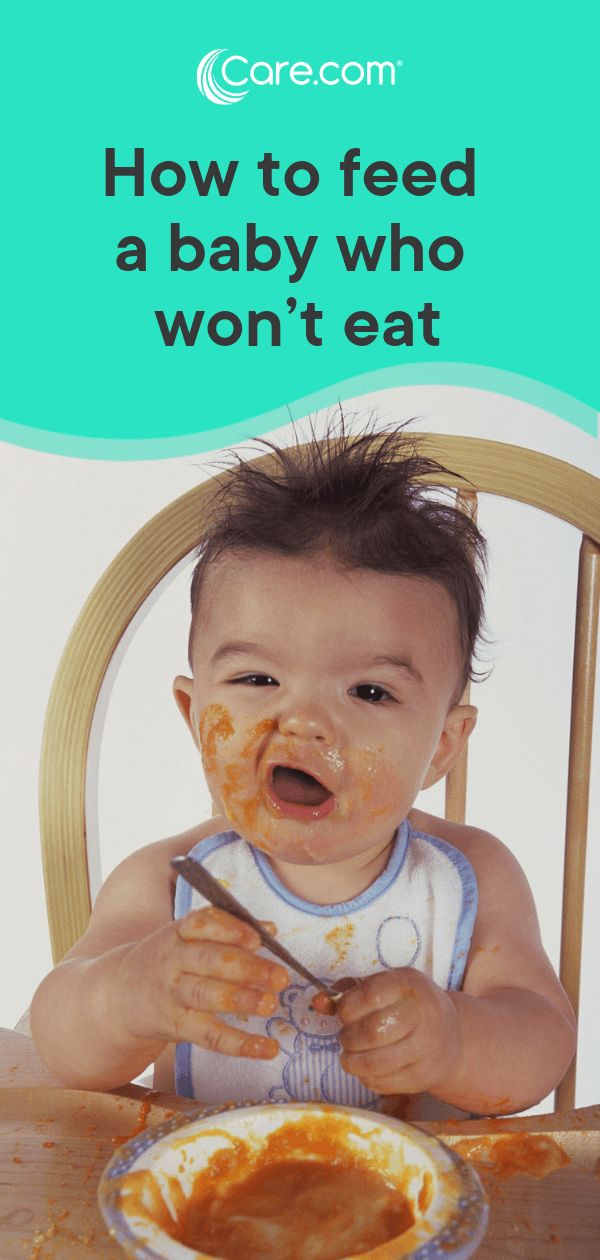 Possible future consequences are allergic reactions and frequent infectious diseases.
Possible future consequences are allergic reactions and frequent infectious diseases.
4. Stop breastfeeding. Early complementary foods will gradually replace breastfeeding and reduce breastfeeding. Which can lead to early cessation of mother's milk. We write about the benefits of GW in almost every article, so we will repeat quite a bit. Mother's milk contains substances that enhance the child's immunity, so the baby is less likely to get sick, and infectious diseases are much easier.
5. Violation of the internal organs . Violation of the digestive tract, a violation of the outflow of bile from the gallbladder, inflammation of the pancreas, all these can be the consequences of early feeding. The baby develops a tendency to chronic diseases of the stomach, intestines, pancreas. Also, early complementary feeding increases the body's load on immature organs such as the liver and kidneys, which increases their exposure to adverse environmental conditions.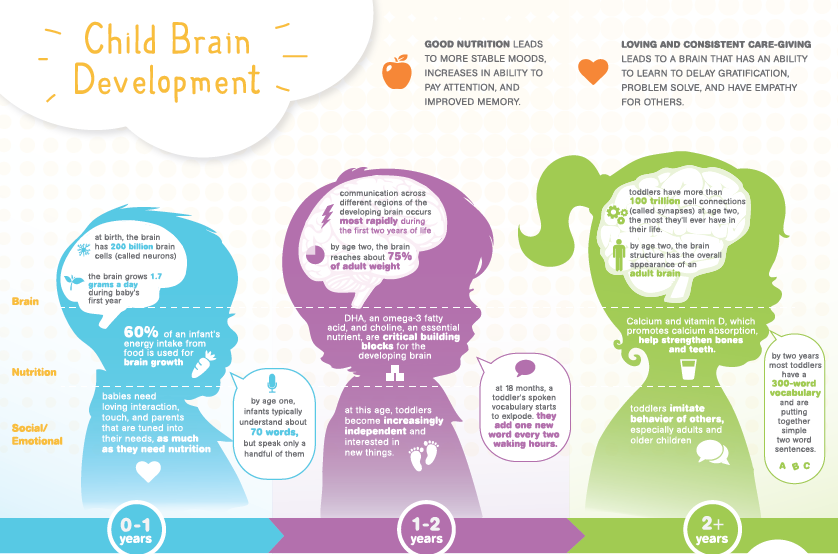 And in the future, the development of such diseases as gastritis, pancreatitis, inflammatory processes in the stomach or intestines, etc. is possible.
And in the future, the development of such diseases as gastritis, pancreatitis, inflammatory processes in the stomach or intestines, etc. is possible.
6. Changes in the intestinal microflora. Everyone knows what is dysbacteriosis! Each person has his own intestinal microflora, the well-coordinated work of which depends on the microbalance, as soon as the balance of forces passes to pathogenic bacteria, dysbacteriosis occurs, the description is a little rough. With an insufficient degree of maturity of the baby's rapidly growing organs, the introduction of early complementary foods is a metabolic catastrophe with various adverse consequences. And a lot in the baby's body depends on the proper functioning of the intestines.
Dysbacteriosis can be the cause of a skin reaction to the introduction of new products (atopic dermatitis) that occurs in children of the first year of life. Early feeding may be at the heart of the appearance of atopic dermatitis. In turn, the introduction of a new baby food product too early leads to aggravation of dysbacteriosis, respectively, a vicious circle arises. The result can be chronic intestinal dysbacteriosis, the development of a strong imbalance and the development of a chronic disease that can last for years.
In turn, the introduction of a new baby food product too early leads to aggravation of dysbacteriosis, respectively, a vicious circle arises. The result can be chronic intestinal dysbacteriosis, the development of a strong imbalance and the development of a chronic disease that can last for years.
7. Lack of interest in food. If the baby is not ready for complementary foods for physiological and psychological reasons, then he will have to be force-fed. Therefore, early complementary foods include liquid cereals or vegetable purees so that the baby can never choke. But it’s natural to wait for the child’s interest in the mother’s nutrition in order to introduce complementary foods.
8. Early acquaintance of the child with an unfavorable external environment. Any food that comes into contact with an external environment that is rich in pathogenic microbes. The ingress of these microorganisms into baby food can cause problems with the gastrointestinal tract, in the form of bloating or upset. Of course, for a child, we take everything fresh or buy high-quality baby purees, but all the same, the child’s food will be in contact with an unfavorable external environment to a greater or lesser extent. Only breast milk immediately enters the child's mouth, excluding contact with pathogens, which is why most parents love breastfeeding.
Of course, for a child, we take everything fresh or buy high-quality baby purees, but all the same, the child’s food will be in contact with an unfavorable external environment to a greater or lesser extent. Only breast milk immediately enters the child's mouth, excluding contact with pathogens, which is why most parents love breastfeeding.
9. Obesity. If the baby is not ready for early complementary foods, but it is introduced, then it is difficult for the baby to determine his state of satiety, so in the future the baby will probably jam problems. And from a scientific point of view, scientists from the University of North Carolina, as well as the Center for Disease Prevention and Control (USA) conducted independent studies and concluded that early complementary foods contribute to obesity in children at a more mature age.
10. Caries. Early feeding in the form of fruit juices is wrong not only from the point of view of dentistry, but also from the point of view of pediatrics. At the stage of teething, the introduction of complementary foods can be dangerous for the baby. Enamel is too vulnerable to aggressive environmental factors. And some types of complementary foods leave a sticky coating on the teeth, which provokes the active reproduction of pathogenic bacteria, and as a result, caries. Moreover, any food, except for mother's milk, provokes a decrease in the pH level in the acidic direction.
At the stage of teething, the introduction of complementary foods can be dangerous for the baby. Enamel is too vulnerable to aggressive environmental factors. And some types of complementary foods leave a sticky coating on the teeth, which provokes the active reproduction of pathogenic bacteria, and as a result, caries. Moreover, any food, except for mother's milk, provokes a decrease in the pH level in the acidic direction.
11. Risk of strangulation. If a child is not ready for early feeding, then he can simply choke on food and suffocate (pah, pah and knock on wood). Therefore, if the baby is not ready for the introduction of complementary foods, the reflex of pushing out the tongue is preserved. Nature has thought of everything to the smallest detail, so we follow the main signs of readiness for complementary foods.
Should I rush and introduce early complementary foods to my baby? Maybe it's worth waiting until it's ready? Carefully monitor the reactions of the baby, he and your maternal intuition will tell you when to introduce complementary foods.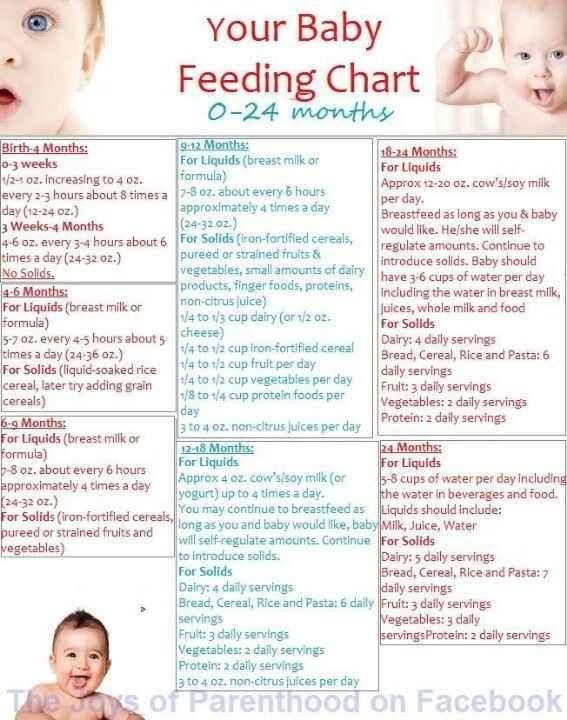
How to introduce complementary foods to a baby?
The introduction of complementary foods is an important and integral part of the process of feeding a child. New parents inevitably have a lot of questions about complementary foods: when to introduce, what to introduce, how to introduce, etc. In this article, we will try to answer the most common questions related to this topic. You can also contact your pediatrician to help you understand the intricacies of introducing complementary foods.
At what age should we start introducing complementary foods?
The World Health Organization recommends introducing complementary foods to children at 6 months of age.
Can complementary foods be started before 6 months?
Since all children develop at different rates, there are children who are ready to be introduced to complementary foods at an earlier age. If there are signs of readiness to introduce complementary foods, it can be introduced to children older than 4 months.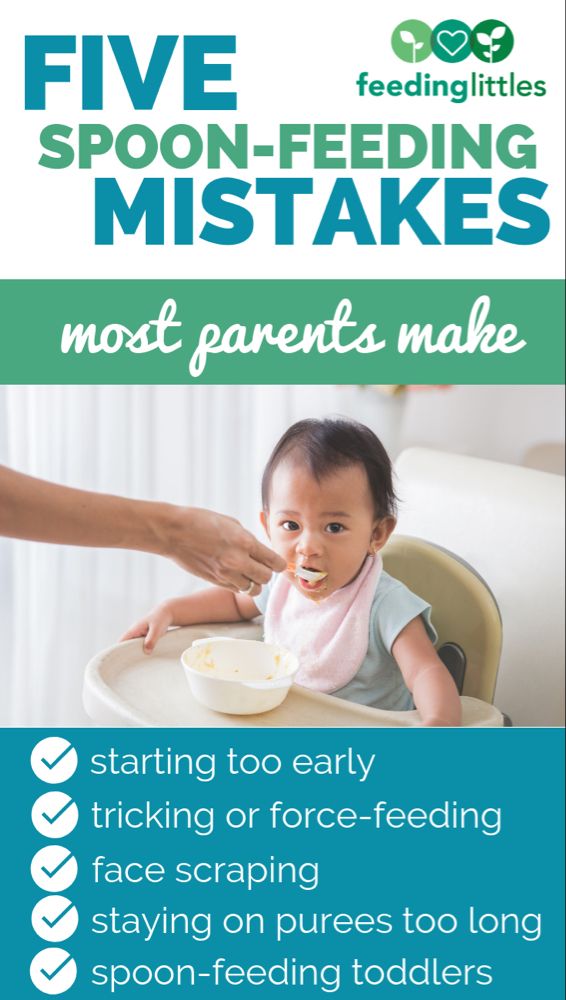 The child is ready to feed if:
The child is ready to feed if:
- shows interest in food (looks at parents with interest when they eat, reaches for food and cutlery)
- confidently holds his head, sits with support
- opens his mouth when a spoonful of food is brought to him, does not push food out with his tongue
What if the child is bottle-fed?
The recommended time for introducing complementary foods is the same for both breastfed and formula-fed babies.
Should I continue to breastfeed after introducing complementary foods?
The World Health Organization recommends that breastfeeding be continued until 2 years of age or beyond. American Academy of Pediatrics - up to 1 year or more.
How to start weaning?
Start with half a teaspoon or even less. At the same time, talk to the child during feeding (“try it, see how delicious it is”, etc.). At first, the child does not understand what he needs to do. He may wrinkle or even refuse to participate in this process. In this case, you can offer the child a breast or milk formula, and then try again to give half a spoonful of complementary foods, then breast or formula again. At the first feeding, most of the food will most likely be on the face and arms of the baby. You need to be prepared for this and not be nervous if this happens.
In this case, you can offer the child a breast or milk formula, and then try again to give half a spoonful of complementary foods, then breast or formula again. At the first feeding, most of the food will most likely be on the face and arms of the baby. You need to be prepared for this and not be nervous if this happens.
Note that when introducing complementary foods, it is not recommended to force the child to eat if he turns away from food or cries. The process of introducing complementary foods is gradual, and if it didn’t work out today, it can work out tomorrow.
What is the best way to eat?
Children eat much better together with the whole family than when they are fed separately. Regular joint family meals have a positive effect on the development of children. Offer your child a variety of healthy foods. As for the amount of food - let the baby decide for himself how much food he will eat at a time.
What kind of food should be given?
For children under 8 months of age, complementary foods are usually given in the form of mashed potatoes. From 8 to 10 months it is enough to knead food with a fork. And children older than 10 months can cut food into thin strips.
From 8 to 10 months it is enough to knead food with a fork. And children older than 10 months can cut food into thin strips.
What type of complementary foods is better to choose for the first time?
In fact, it doesn’t matter what exactly complementary foods are started with. Traditionally, porridge is introduced first, then vegetables, fruits, and lastly meat. In practice, you can follow this scheme, or you can choose any other sequence.
If you start complementary foods with fruits, what if the child will not eat vegetables later?
Pediatricians often recommend introducing vegetables before introducing fruit, because after the child has tasted fruit, he will not want to eat vegetables. In fact, such assumptions are unfounded. Almost all children love sweets, and the order of introduction of complementary foods cannot change this.
Is it possible to start complementary foods with meat?
Yes, you can. Meat is especially useful for children who feed exclusively on breast milk.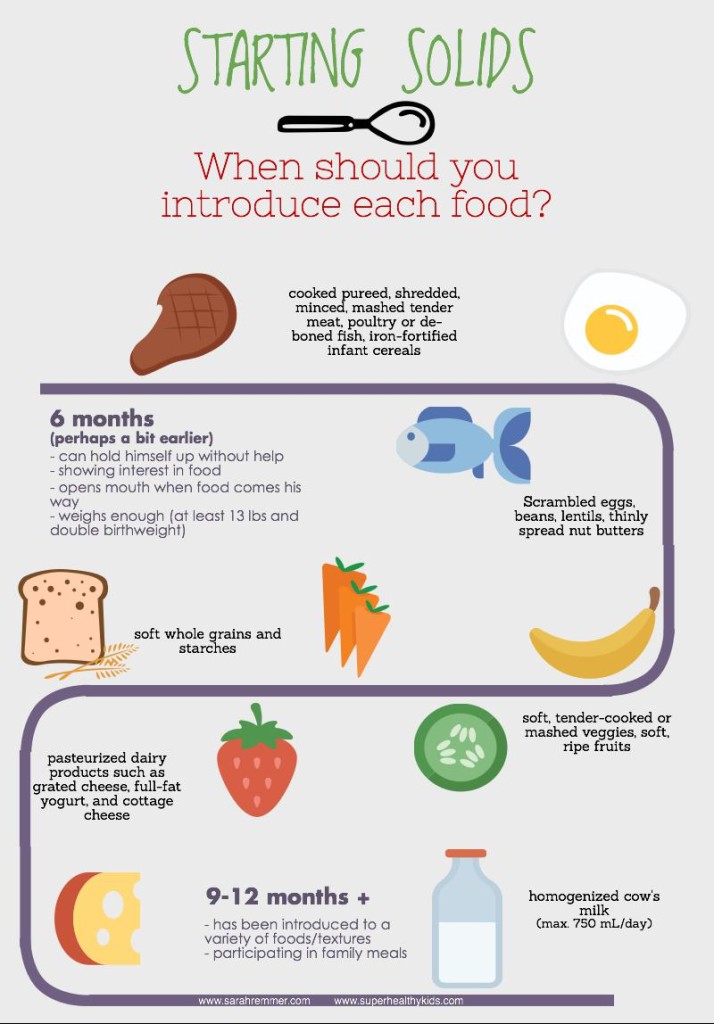 Meat contains a large number of important elements for the child - iron and zinc.
Meat contains a large number of important elements for the child - iron and zinc.
What is the best porridge to start with?
With almost any - buckwheat, rice, corn, oatmeal, etc. It is better to opt for cereals enriched with iron.
Is it possible to give semolina?
Semolina porridge contains a huge amount of carbohydrates with a low content of fiber and vitamins. You can give it, but there is no need to use it.
When can I introduce the next type of complementary foods?
Gradually increase the volume of complementary foods and if it is well tolerated, start introducing the next type of complementary foods in 3-4 days. New food can be given along with the already introduced. Introduce one food at a time.
When to introduce fish, eggs, nuts, berries, citrus and legumes?
These types of food are somewhat more likely (compared to others) to cause allergic reactions in children. However, there is no need to delay the introduction of these products to a later date. Research results show that early introduction of these foods may reduce the risk of developing allergies in children.
Research results show that early introduction of these foods may reduce the risk of developing allergies in children.
How do you know if a child has a food allergy?
Food allergies can be suspected by the following symptoms: vomiting, diarrhea, blood in the stool, rash after the introduction of complementary foods. If these symptoms occur, it is necessary to show the child to the doctor.
How to give nuts?
Nuts can be given as a powder or paste. You can add them, for example, to porridge.
Isn't there too much to feed?
About a couple of months after the start of the introduction of complementary foods, it is desirable that the child's diet includes food with a variety of tastes, smells and textures: cereals, vegetables, fruits, meat, eggs, fish, cottage cheese, etc.
Can children have honey?
It is not recommended to give honey to children under one year old, as it may contain spores of bacteria dangerous for babies that can cause botulism.